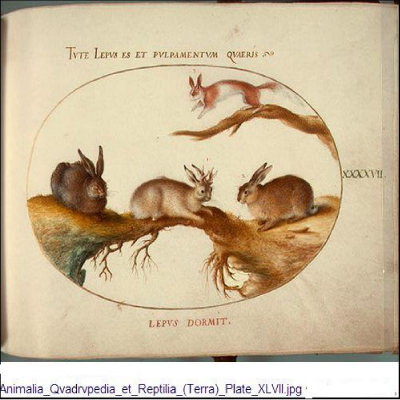
Since this is the season of whimsy and fun, let’s revisit legends of the Old West that have spawned some mythical creatures in Arizona. Today we examine three of them: the Santa Cruz Sand Trout, the Arizona Stick Lizard, and the Jackalope. One of these creatures has some basis in fact and the legend may have originated in 16th Century Europe.
Santa Cruz Sand Trout
The Santa Cruz Sand Trout is the native fish of the usually dry Santa Cruz River that runs through Tucson. Folks from wetter climates should realize that in Tucson we do not hide rivers under water. The story of the Sand Trout shows how native fauna can adapt to climate change.
One way to catch a Santa Cruz Sand Trout is to stomp on the river bank and look for the cloud of dust in the river bed as the trout try to get away. Then just run out and grab them.
The Late Hugh Holub has the most concise dissertation on this fish (http://www.bandersnatch.com/trout.htm). He wrote the following as a satire of many Endangered Species listing proposals:
As the last Ice Age ended and the climate of Southern Arizona warmed and dried out, the flows of the Santa Cruz River near Tucson became erratic and then vanished completely by the mid-1950s due to the construction of a series of cheap hotels on its banks. The native fish of that stretch of the river became extinct, with the exception of the Santa Cruz Sand Trout, which evolved a capability to live in an environment completely devoid of water.
The Santa Cruz Sand Trout ranges in size from approximately 5 centimeters to over 100 centimeters, and is characterized by a rubbery skin. It is difficult to tell whether a Santa Cruz Sand Trout is dead or alive due to its extremely low metabolism rate.
The Santa Cruz Sand Trout has been commercially harvested and sold in Tucson toy stores for many years, delighting several generations of local children. There are many reports of Santa Cruz Sand Trout escaping Tucson homes and establishing residence in backyard sand boxes and local washes.
The Santa Cruz Sand Trout is one of Baja Arizona’s most highly prized sport fish, requiring the use of a 4×4 to troll the riverbed. Beer cans are reportedly the most effective artificial lure to catch Sand Trout.
Efforts to restore the flow of the Santa Cruz River with treated sewage effluent have some environmentalists concerned, as this may cause the destruction of the prime Santa Cruz Sand Trout habitat and lead to their extinction. The Santa Cruz Sand Trout can only survive short periods of wetness, such as occur during the infrequent storm flows in the river. A petition to have the Santa Cruz Sand Trout declared an endangered species is being prepared by the Baja Arizona Ministry of Commercial Fisheries.
The Santa Cruz Sand Trout has also been nominated for an award for water conservation efficiency as it is the only known Arizona species of fish which requires zero gallons per capita of water to survive.
Sculpture and a plaque dedicated to the sand trout: http://www.christanz.com/sand-trout/
The Santa Cruz Sand Trout should not be confused with another Sand Trout known to occur in southern estuaries: http://www.fishing-tips-bait-tackle.com/sand_trout.html.
Arizona Stick Lizard (aka Sonoran Desert Stick Lizard)
The desert floor can get very hot. In summer, air temperature within one inch of the ground can get as hot as 160 degrees Fahrenheit. What is a lizard to do? The Arizona Stick Lizard has a clever adaptation. It carries a stick which it can plunge into the sand and then climb the stick to avoid burning its feet. Or, the lizard can use the stick to pole vault over the hot spots. Some claim that the lizard can cool off in its own shadow while on the stick.
The stick serves another purpose as well. It makes the lizard too wide to be swallowed by snakes.
The Arizona Stick Lizard has been memorialized in works of art such as that at the Tucson Museum of Art, see: http://www.tucson.halversen.com/art/sticklizard.html
And sometimes sticks look like lizards: http://www.flickr.com/photos/26038958@N08/2459389106/
Jackalopes (aka “Horned Rabbits” and “Deer bunnies”)
The Jackalope is a hybrid between jack rabbits and antelopes or deer. This critter, which has long been in folklore, was made famous in a postcard devised by photographer Bob Petley.
Jackalopes are said to be fierce creatures which use their antlers to fight off other animals. They are also whimsical.
Jackalopes possess an uncanny ability to mimic human sounds. In the old West, when cowboys would gather by their campfires to sing at night, jackalopes would frequently be heard singing back, mimicking the voices of the cowboys. Jackalopes become especially vocal before thunderstorms, perhaps because they mate only when lightning flashes (or so it is theorized).
When chased, the jackalope will use its vocal abilities to elude capture. For instance, when chased by people it will call out phrases such as, “There he goes, over there,” in order to throw pursuers off its track. The best way to catch a jackalope is to lure it with whiskey, as they have a particular fondness for this drink. Once intoxicated, the animal becomes slower and easier to hunt.
Jackalope milk is particularly sought after because it is believed to be a powerful aphrodisiac (for which reason, the jackalope is also sometimes referred to as the ‘horny rabbit’). However, it can be incredibly dangerous to milk a jackalope, and any attempt to do so is not advised. A peculiar feature of the milk is that it comes from the animal already homogenized on account of the creature’s powerful leaps. [Source]
Jackalopes are not confined to Arizona. Wyoming claims to be the “jackalope capital of America.” “In 2005, the state legislature of Wyoming considered a bill to make the jackalope the state’s official mythological creature. It passed the house by a 45-12 margin, but the session ended before the senate could take up the bill, and so it died.”
Jackalope-like animals were reported in Europe as early as the 16th Century. This was probably due to the occurrence of rabbits with antler-like tumors on their heads, the result of papillomavirus infections. Even Buddha mentioned “horned rabbits.”
(See http://www.medirabbit.com/EN/Skin_diseases/Viral_diseases/Pap/Papilloma.htm )
Jackalopes are said to be fierce creatures which use their antlers to fight off other animals. They are also whimsical.
Jackalopes possess an uncanny ability to mimic human sounds. In the old West, when cowboys would gather by their campfires to sing at night, jackalopes would frequently be heard singing back, mimicking the voices of the cowboys. Jackalopes become especially vocal before thunderstorms, perhaps because they mate only when lightning flashes (or so it is theorized).
When chased, the jackalope will use its vocal abilities to elude capture. For instance, when chased by people it will call out phrases such as, “There he goes, over there,” in order to throw pursuers off its track. The best way to catch a jackalope is to lure it with whiskey, as they have a particular fondness for this drink. Once intoxicated, the animal becomes slower and easier to hunt.
Jackalope milk is particularly sought after because it is believed to be a powerful aphrodisiac (for which reason, the jackalope is also sometimes referred to as the ‘horny rabbit’). However, it can be incredibly dangerous to milk a jackalope, and any attempt to do so is not advised. A peculiar feature of the milk is that it comes from the animal already homogenized on account of the creature’s powerful leaps. [Source]
Jackalopes are not confined to Arizona. Wyoming claims to be the “jackalope capital of America.” “In 2005, the state legislature of Wyoming considered a bill to make the jackalope the state’s official mythological creature. It passed the house by a 45-12 margin, but the session ended before the senate could take up the bill, and so it died.”
Jackalope-like animals were reported in Europe as early as the 16th Century. This was probably due to the occurrence of rabbits with antler-like tumors on their heads, the result of papillomavirus infections. Even Buddha mentioned “horned rabbits.”
(See http://www.medirabbit.com/EN/Skin_diseases/Viral_diseases/Pap/Papilloma.htm )
Spend some time on the Santa Cruz River walk. There you may see both the Stick Lizard and the Santa Cruz Sand Trout.
For more interesting critters, check out the Mogollon Monster and the Legend of the Red Ghost.



